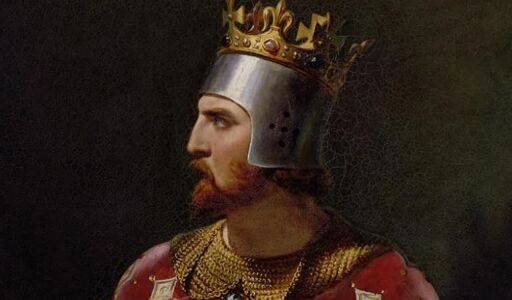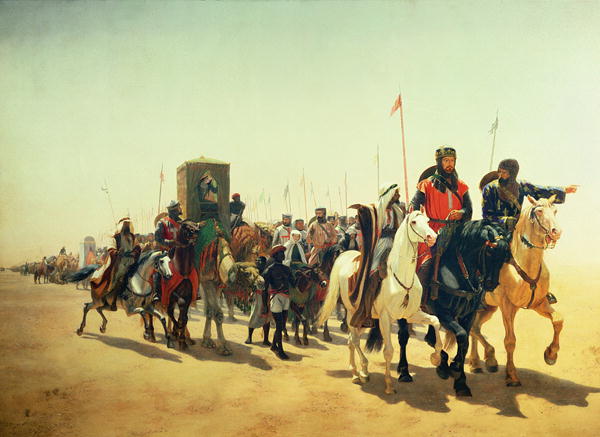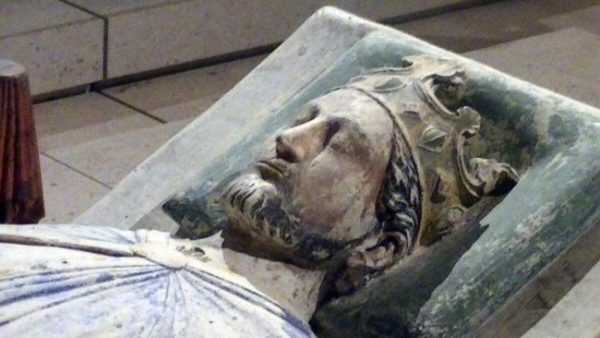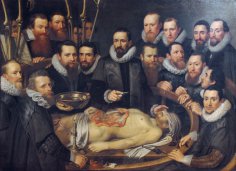
He became the hero of many ballads, ancient chronicles. A knight, a great example of chivalry, praised by Walter Scott in many books, he was famous when he ruled England, then was forgotten for a long time, then became famous again. He is the King of England, Richard the Lionheart.
Born on September 8, 1157, Richard was the third son of King Henry II of England (Plantagenet dynasty) and Eleanor (Aliénor) of Aquitaine, Duchess of Aquitaine and Gascony, Queen of France, Countess of Poitiers, who by then had become Queen of England.
It seems that the king's third son was not originally destined to have the crown. However, his older brothers died in childhood, so he became the crown prince. From early childhood, the boy showed an interest in military affairs and knightly ideals.
His mother took care of her son's education. He spoke French and English fluently, knew Latin and Provençal very well (at that time English and French had many dialects). He composed poems in several languages, knew how to set his poems to music, and performed the songs he created, accompanying himself. Two canzones by Richard the Lionheart have survived to this day.
England and France were very closely connected at that time. The kings of England owned vast territories in France (Aquitaine, Normandy, Brittany). After all, not long before that, in 1066, England had been captured by William the Conqueror, Duke of Normandy.
When Henry II died, Richard became King of England Richard I. He was King of England for 10 years, but he only ruled England for about half a year while sitting on the throne. But he became famous for his military exploits during the Third Crusade (1189-1192).
The Third Crusade was proclaimed in 1187 by Pope Urban III in order to liberate the Holy Sepulchre in Jerusalem from the “Mohammedans”. The capture of the city was declared the goal of this campaign.
Jerusalem was captured from the “infidels” during the First Crusade, but time passed, the Muslims gathered their forces and Sultan Saladin drove the Crusader knights out of the city, capturing it in 1187.
In 1190, the knights of the Lord set out on a campaign. In addition to many ordinary knights, in addition to the King of England Richard I, the King of France Philip II Augustus and the Emperor of the Holy Roman Empire Frederick I Barbarossa participated.
Richard and Philip set out for the goal of the campaign by sea, while Frederick Barbarossa led his army by land. Having united, the participants of the campaign moved towards their goal. They besieged the fortress of Acre and after a long siege captured it.
Then they moved on to Jerusalem. A battle took place near Arsuf, again won by the Crusaders. The courage and skills of the King of England Richard I by this time brought him fame and the nickname Lionheart.

James William Glass, Richard the Lionheart on the Road to Jerusalem, 1850, public domain
Then came the siege of Jerusalem. Alas, the Christians failed to take the city. However, the Muslims were also exhausted in battle, and so Richard the Lionheart managed to conclude an agreement with Saladin, according to which, although the city remained under the rule of the Muslim ruler, Christian knights were to be allowed to the Holy Sepulcher without hindrance.
The further life of King Richard was again full of military actions. After all, on the way home, in the vicinity of Vienna, he was captured by the soldiers of Leopold of Austria and released only after the ransom was paid.
Returning to England on March 13, 1194, he learned that his younger brother John, whom he had left in power as regent, had declared himself king. And during his regency and pseudo-royalty, he had done so much that it took a long time to clean up.
However, the people of England joyfully welcomed King Richard, so it was possible to restore order in the kingdom quite quickly. The king's vassals, who declared themselves supporters of King John, surrendered only when they saw the army brought by King Richard. And they were happy to remain in power in their fiefs, having only paid the king a contribution for their rebellion.
On 17 April 1194, Richard was re-crowned at Winchester, and before the ceremony he took the oath of allegiance from all the lords of England subject to him.
And again he was drawn to military adventures. On May 12, the Lionheart set off for France again – his French vassals, left without the firm hand of their lord, began to rebel. This time he left Hubert Gautier as regent.
In France, Richard fought against Philip of France. He usually won the battles, but Philip tried to win over the English king's vassals. The Lionheart built new fortresses in his lands and stormed the fortresses of the renegades.
So the years passed in battles and campaigns. And when the Holy Roman Emperor Henry VI died on December 11, 1197, the German princes all agreed that the best emperor would be Richard the Lionheart. The envoys of the Empire offered him the crown. He refused, offering them to proclaim Otto of Brunswick, the son of his sister Matilda, emperor. And the restless king continued to participate in battles.
During the siege of Châlus Castle on April 6, 1199, Richard was wounded by a crossbow arrow. Unfortunately, the wound was contaminated, blood poisoning set in, and the king died 11 days later. His body was buried in the Fontevraud Abbey in France (now on the border between Anjou and Poitou, near the city of Saumur). His father Henry II Plantagenet had previously been buried in the same abbey.

Tomb of Richard the Lionheart at Fontenvraud Abbey by Adam Bishop under CC BY-SA 3.0
Historians generally agree that the king's death was an accident. Although some experts suggest that one of his enemies could have contributed to the infection of the wound. Or perhaps the crossbow was fired not from the fortress wall, but from somewhere closer. After all, there was a battle going on, who knows where someone was shooting…





